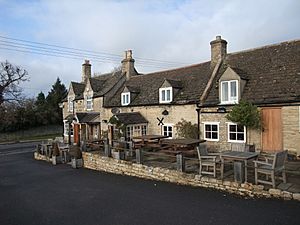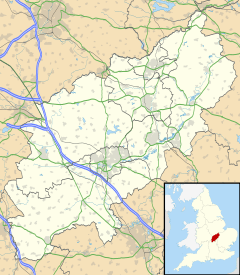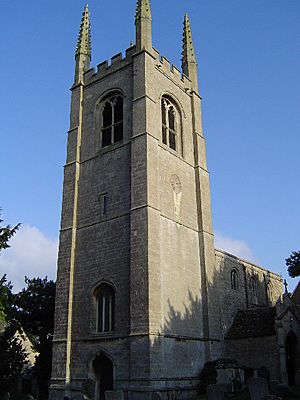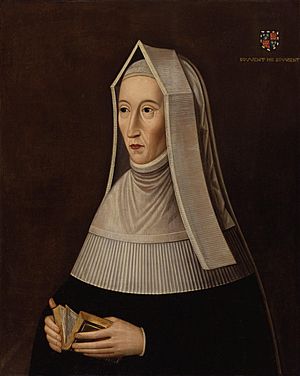Collyweston facts for kids
Quick facts for kids Collyweston |
|
|---|---|
 The Collyweston Slater pub |
|
| Population | 514 (2011 Census) |
| OS grid reference | SK996030 |
| Civil parish |
|
| Unitary authority |
|
| Shire county | |
| Region | |
| Country | England |
| Sovereign state | United Kingdom |
| Post town | Stamford |
| Postcode district | PE9 |
| Dialling code | 01780 |
| Police | Northamptonshire |
| Fire | Northamptonshire |
| Ambulance | East Midlands |
| EU Parliament | East Midlands |
| UK Parliament |
|
Collyweston is a small village in North Northamptonshire, England. It is about three miles southwest of Stamford, Lincolnshire. You can find it on the A43 road, which goes towards Kettering. In 2011, about 514 people lived in Collyweston.
Contents
Exploring Collyweston's Location
Collyweston is located on the southern side of the Welland valley. This is a valley formed by the River Welland. The river itself forms the border between Rutland and Northamptonshire nearby.
Travel and Paths
Long ago, there was a train station called Ketton and Collyweston railway station. It closed in 1966. Today, buses connect Collyweston to Stamford and Peterborough. These buses travel through a village called Duddington.
If you enjoy walking, two famous paths pass near Collyweston. These are the Jurassic Way and the Hereward Way. They cross the River Welland at Collyweston Bridge.
Nature Spots
The A47 road goes through the southern part of the area. South of this road is a large forest called Collyweston Great Wood. A straight road called Kingscliffe Road connects the A47 to the village.
Collyweston Quarries Nature Reserve
The local Wildlife Trust looks after a special nature reserve here. It's about 15 acres big. This area, called Collyweston Quarries, used to be a place where Lincolnshire limestone was dug up.
Now, it's home to many interesting plants and animals. You can find beautiful flowers like the pyramidal orchid and the clustered bellflower. Other plants include common dodder, greater knapweed, common rock-rose, and common bird's foot trefoil.
Birds like the European green woodpecker live here. In the summer, you might even spot glowworms!
Collyweston Great Wood
There's another important nature area nearby. It's called Collyweston Great Wood and Easton Hornstocks. This place is a SSSI. This means it's a protected area because of its special wildlife or geology.
Collyweston's Past
The name Collyweston means "West farm" or "West settlement." Some people think the "Colly" part comes from "Colin." This was a nickname for Nicholas, who owned the land in the 1200s. So, it might have been called "Colyns Weston" a long time ago.
In the village, there's a pub on Main Road called 'The Collyweston Slater'. It's owned by a company called Everards Brewery. You can also find new houses on a road named 'Collyns Way'. The main church in the village is St Andrew's Church. It's a very old and important building, listed as Grade II* listed.
A famous English church leader, John Stokesley (1475–1539), was born in Collyweston. He became the Bishop of London during the time of King Henry VIII.
Collyweston Palace
Collyweston Palace was once a grand home in the village. It was where Lady Margaret Beaufort lived later in her life. She was a very important person because she was the mother of Henry VII, who became King of England.
In 1498, Lady Margaret decided to live a very religious life. She chose Collyweston as her home. People who worked for her, like Henry Parker, 10th Baron Morley, wrote about life at the palace. They described her special chapel and the fun New Year's Day parties. Even Princess Cecily visited for these celebrations!
Lady Margaret loved to decorate her home. In 1498, new furniture for her rooms at Collyweston was embroidered. It had her special symbols, like roses and a portcullis (a gate). She also gave beautiful fabrics and church clothes to St Andrew's Church.
In 1503, Margaret Tudor (1489–1541) visited Collyweston Palace. She was on her way to Scotland to marry James IV of Scotland. During her visit, one of her helpers got married at the palace. Six Spanish dancers even performed a special morris dance for everyone!
In 1506, something unusual happened. A priest was brought to Lady Margaret's court. He was said to have tried to baptize a cat. He did this as part of a charm to find treasure.
After Lady Margaret Beaufort passed away in 1509, a list was made of all her clothes at Collyweston. She had many black gowns, some with long trains and some without.
The palace was taken apart around 1640, and not much was left. But in 2023, scientists used special radar to find where the main buildings were. They even dug up some of the old wall foundations!
The Word "Collywest"
You might hear the word 'collywest' (or 'colleywest', or 'collywesson'). This word comes from Collyweston. It means something that is a bit crooked, wobbly, or not straight. It can also mean the opposite or the wrong way around.
People think this word came from the slate that was dug up in Collyweston. The best, straight pieces of slate were sold. But the crooked or uneven pieces were used for the roofs of houses in the village. This made the rooftops look a bit messy or "collywest." In some parts of the northern US, they use a similar word, 'galley-west', which also means something is off or wrong.
See also
 In Spanish: Collyweston para niños
In Spanish: Collyweston para niños




